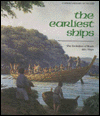Leonard Peltier Defense Committee
Aho my relations,
I again write to you on this day of mourning as I approach the end of 3O years of deprived freedom. I am here to appease a vengeful government that has come onto our lands, committed genocide and continues to rob us of our history and culture while giving away our land, murdering, and torturing our people. I am held here because of the corruption of two countries (Canada and the United States) which illegally extradited me, and which led to an illegal conviction and imprisonment. Despite the incessant claims of this being a country of laws and an example to the world of justice, freedom, and democracy, it is obvious that this Government protects whoever it wants, and imprisons and kills whoever it wants.
My imprisonment is one key example of what lengths this Government will go to in order to achieve its goal of repressing indigenous dissent. The United States Government continually seeks to imprison all indigenous peoples on our land. The US Government has been increasing its oppressive and tyrannical tactics. All peoples rights are being eroded and fears are heightened as a tool to keep the war machine alive and increase the destruction of Mother Earth. Innocent people are dying, not only in this country, but all over the world in the name of 'democracy and freedom.'"






